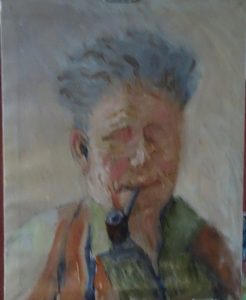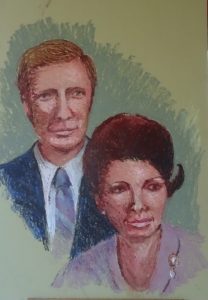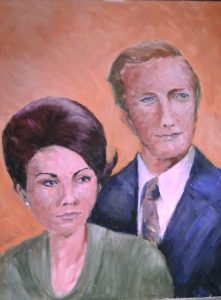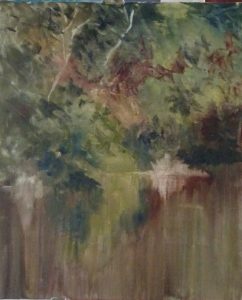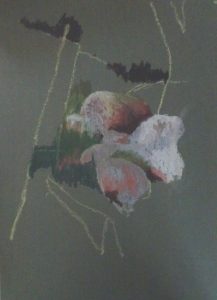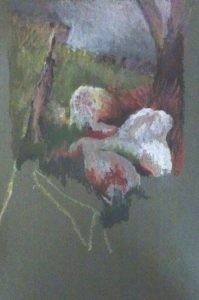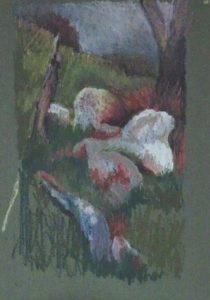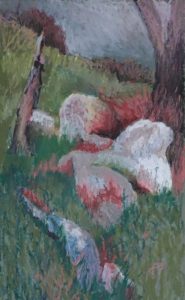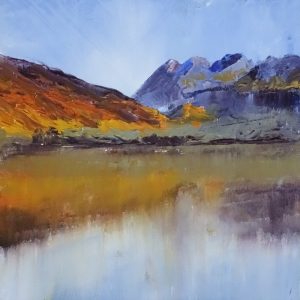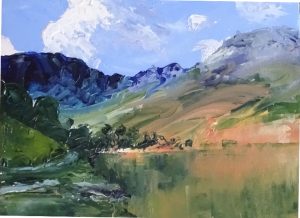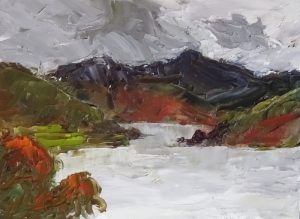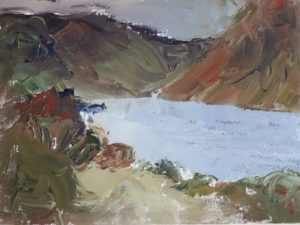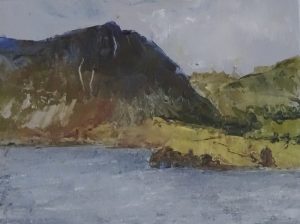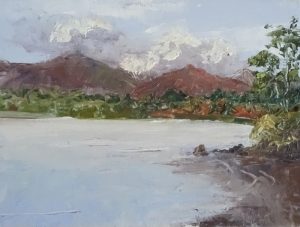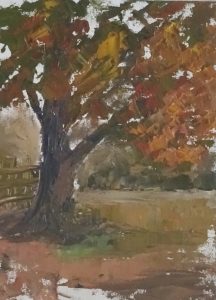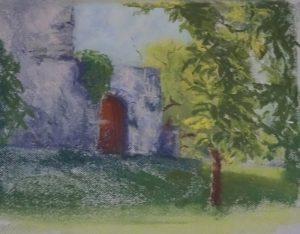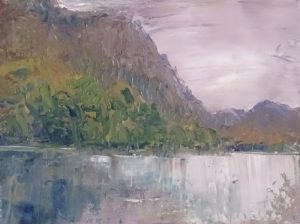Rob Wareing’s book on portrait painting has arrived from SAA, and it’s going to be useful. it is a “How t0” book but discusses much more about portraits than just paint on canvas – pose, lighting, using photographs or not, brush strokes, preliminary sketches, layout, paint selection, and, crucially, aims and intentions of both sitter and artist. In my innocence, I had assumed that the sitter wanted a likeness that showed them in a kindly light, and the artist wanted to paint a recognisable human being! The book needs careful study, but this fool wants to rush in! When will I ever learn???
 In this painting there is no dilemma as I’m working from an old and not very good snapshot. But Higgy of blessed memory had an interesting face and a plethora of expressions. Needless to say I dived in without any sketching or close examination of the snap. I did use charcoal, as suggested by Rob Wareing, to lay out the drawing on the toned canvas, and liked the ease of correction, then blocked in the main tonal areas.
In this painting there is no dilemma as I’m working from an old and not very good snapshot. But Higgy of blessed memory had an interesting face and a plethora of expressions. Needless to say I dived in without any sketching or close examination of the snap. I did use charcoal, as suggested by Rob Wareing, to lay out the drawing on the toned canvas, and liked the ease of correction, then blocked in the main tonal areas.
I stood well back to introduce more detail, trying not to blend too much, to have the courage to paint the light in stronger tones than the photo which was very lacklustre. The warmer tones are helping too.
 Well, it’s vigorous and sketchy. The clothes are good! The mouth is not too bad, but the heavy expression in not Higgy, a big generous man with an impish sense of humour. His eyes have climbed up his face as I worked on them, and, I now realise that both eyes and nose are too far to the left. There is no room for the side of his head. The thing about oil paint is that you can scrape it down and start again. Out came his eyes and nose!
Well, it’s vigorous and sketchy. The clothes are good! The mouth is not too bad, but the heavy expression in not Higgy, a big generous man with an impish sense of humour. His eyes have climbed up his face as I worked on them, and, I now realise that both eyes and nose are too far to the left. There is no room for the side of his head. The thing about oil paint is that you can scrape it down and start again. Out came his eyes and nose!
and I tried again. This is better. There is even amusement in his expression – how did I achieve that!? There is a mountain to conquer here but I am enjoying the foot hills.

